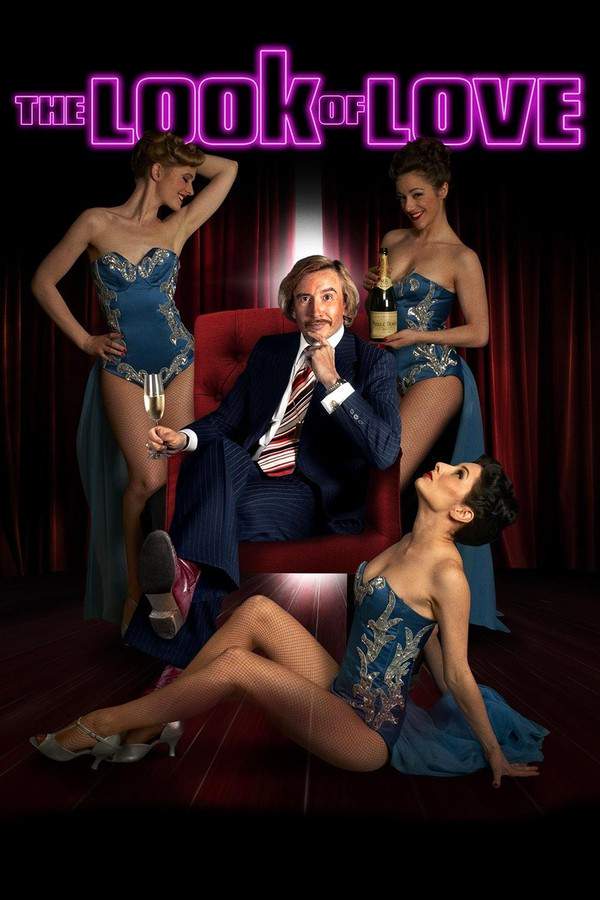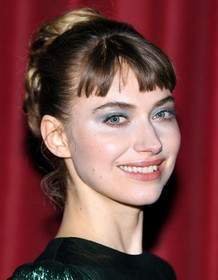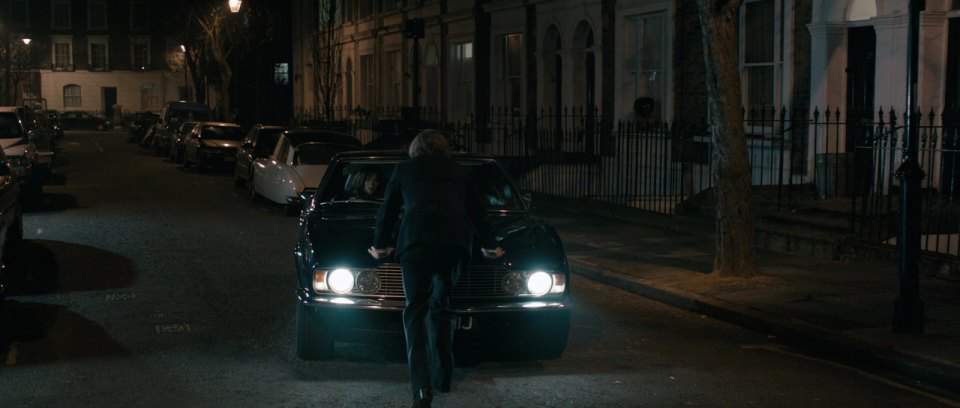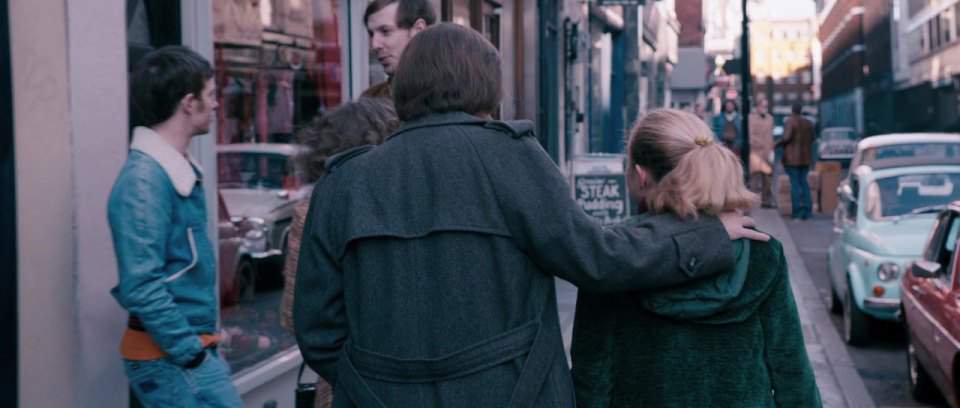The Look of Love 2013

This biopic portrays Paul Raymond, a charismatic and controversial figure who transformed British entertainment. Steve Coogan stars as Raymond, recounting his journey from the swinging 1960s to the 1980s. He built a notable empire of nudie theaters and publications, pushing boundaries and redefining UK culture with a blend of sophistication and scandal. The film explores his remarkable career and the impact he had on the nation’s entertainment landscape.
Does The Look of Love have end credit scenes?
No!
The Look of Love does not have end credit scenes. You can leave when the credits roll.
Meet the Full Cast and Actors of The Look of Love
Explore the complete cast of The Look of Love, including both lead and supporting actors. Learn who plays each character, discover their past roles and achievements, and find out what makes this ensemble cast stand out in the world of film and television.
External Links and Streaming Options
Discover where to watch The Look of Love online, including streaming platforms, rental options, and official sources. Compare reviews, ratings, and in-depth movie information across sites like IMDb, TMDb, Wikipedia or Rotten Tomatoes.
Ratings and Reviews for The Look of Love
See how The Look of Love is rated across major platforms like IMDb, Metacritic, and TMDb. Compare audience scores and critic reviews to understand where The Look of Love stands among top-rated movies in its genre.

57
Metascore
5.1
User Score


56%
TOMATOMETER

34%
User Score

6.0 /10
IMDb Rating

56
%
User Score

0.00/5
Take the Ultimate The Look of Love Movie Quiz
Challenge your knowledge of The Look of Love with this fun and interactive movie quiz. Test yourself on key plot points, iconic characters, hidden details, and memorable moments to see how well you really know the film.
The Look of Love Quiz: Test your knowledge about the life and legacy of Paul Raymond as depicted in 'The Look of Love'.
What tragic event influences Paul Raymond at the beginning of the film?
The death of his wife
The funeral of his daughter Debbie
His bankruptcy
The closing of his nightclub
Show hint
Full Plot Summary and Ending Explained for The Look of Love
Read the complete plot summary of The Look of Love, including all major events, twists, and the full ending explained in detail. Explore key characters, themes, hidden meanings, and everything you need to understand the story from beginning to end.
As Paul Raymond settles into his London flat in 1992, he is shrouded in an overwhelming sense of sorrow, a lingering misty veil draped over his existence. The haunting memory of his daughter Debbie’s recent funeral weighs heavily on his mind. While revisiting a videotape of a television program they once filmed together, he is flooded with nostalgia, ultimately transporting him to a pivotal time that paved the way for his ascent to fame.
Through vivid flashbacks, we uncover Raymond’s modest beginnings as an impresario in the vibrant seaside variety show circuit of the late 1950s. With his remarkable knack for reinvention, he elevates his performances into sensational spectacles featuring semi-nude women. An incident involving a lion attacking dancers only seemed to invigorate his ambitions. When his wife, Jean, joined the show, Raymond’s popularity began its meteoric rise. A scandal ignited by the Daily Sketch claiming Jean performed nude led to an unsuccessful lawsuit, yet the attention served as a springboard for his career. Seizing the moment, he opened the infamous Raymond Revuebar in London, establishing the foundation of his property empire and a representation of his playboy lifestyle.
As the years progressed, Raymond boldly pushed the envelope further, transitioning into theatrical revues and nurturing the careers of aspiring actresses, including Amber St. George. Their passionate, yet tumultuous romance came at the expense of his marriage to Jean. During this tumultuous chapter, Raymond also attempted to reconnect with his grown son, Derry, whom he had fathered out of wedlock. However, an awkward dinner marked the end of their brief reunion before Raymond chose to sever ties.
His fascination with a young man named Tony Power inspired the launch of Men Only magazine. Power was drawn into a world filled with sleaze and corruption, ultimately meeting a tragic fate. The magazine’s success was, in part, due to St. George’s provocative portrayal as a “sex reporter” using the pseudonym Fiona Richmond. Throughout this chaotic lifestyle, Raymond indulged in hedonism, frequently turning to cocaine as a vice.
The arrival of Debbie into Raymond’s life heralded the dawn of a new chapter. He attempted to showcase her talent in his theatrical productions, though her lack of skill resulted in a show that was a dismal failure. Debbie would later marry musician Jonathan Hodge, prompting Jean to reappear during their wedding, even offering to pose nude for Raymond’s magazine. In a dire turn of events, during her delivery, Debbie tragically gave birth to a girl while under the influence of cocaine provided by her father. Her untimely death in 1992 due to a heroin overdose left a profound scar on Raymond.
After the solemn funeral, Raymond returns home with his granddaughter, sharing reflections about the properties that will eventually be hers. The burden of his legacy looms large, and he contemplates the complex life he has led. The story culminates in an epilogue revealing that by December 1992, Paul Raymond had become the richest man in Britain, an enduring testament to his immeasurable influence and lasting footprint in popular culture.
Uncover the Details: Timeline, Characters, Themes, and Beyond!

Coming soon on iOS and Android
The Plot Explained Mobile App
From blockbusters to hidden gems — dive into movie stories anytime, anywhere. Save your favorites, discover plots faster, and never miss a twist again.
Sign up to be the first to know when we launch. Your email stays private — always.
Watch Trailers, Clips & Behind-the-Scenes for The Look of Love
Watch official trailers, exclusive clips, cast interviews, and behind-the-scenes footage from The Look of Love. Dive deeper into the making of the film, its standout moments, and key production insights.
Cars Featured in The Look of Love
Explore all cars featured in The Look of Love, including their makes, models, scenes they appear in, and their significance to the plot. A must-read for car enthusiasts and movie buffs alike.
The Look of Love Themes and Keywords
Discover the central themes, ideas, and keywords that define the movie’s story, tone, and message. Analyze the film’s deeper meanings, genre influences, and recurring concepts.
The Look of Love Other Names and Titles
Explore the various alternative titles, translations, and other names used for The Look of Love across different regions and languages. Understand how the film is marketed and recognized worldwide.
Similar Movies To The Look of Love You Should Know About
Browse a curated list of movies similar in genre, tone, characters, or story structure. Discover new titles like the one you're watching, perfect for fans of related plots, vibes, or cinematic styles.
Quick Links: Summary, Cast, Ratings, More

What's After the Movie?
Not sure whether to stay after the credits? Find out!
Explore Our Movie Platform
New Movie Releases (2026)
Famous Movie Actors
Top Film Production Studios
Movie Plot Summaries & Endings
Major Movie Awards & Winners
Best Concert Films & Music Documentaries
Movie Collections and Curated Lists
© 2026 What's After the Movie. All rights reserved.
















































